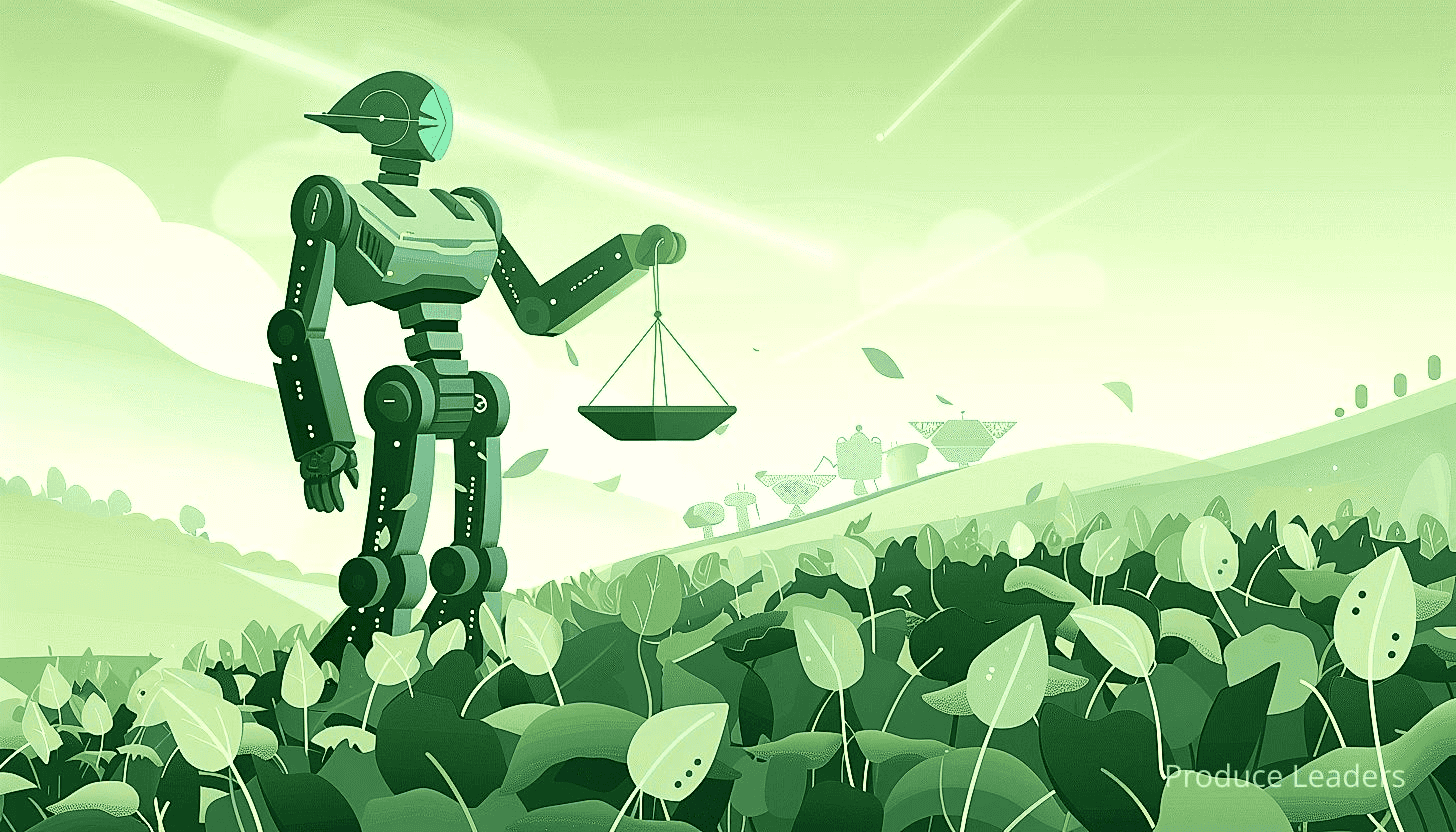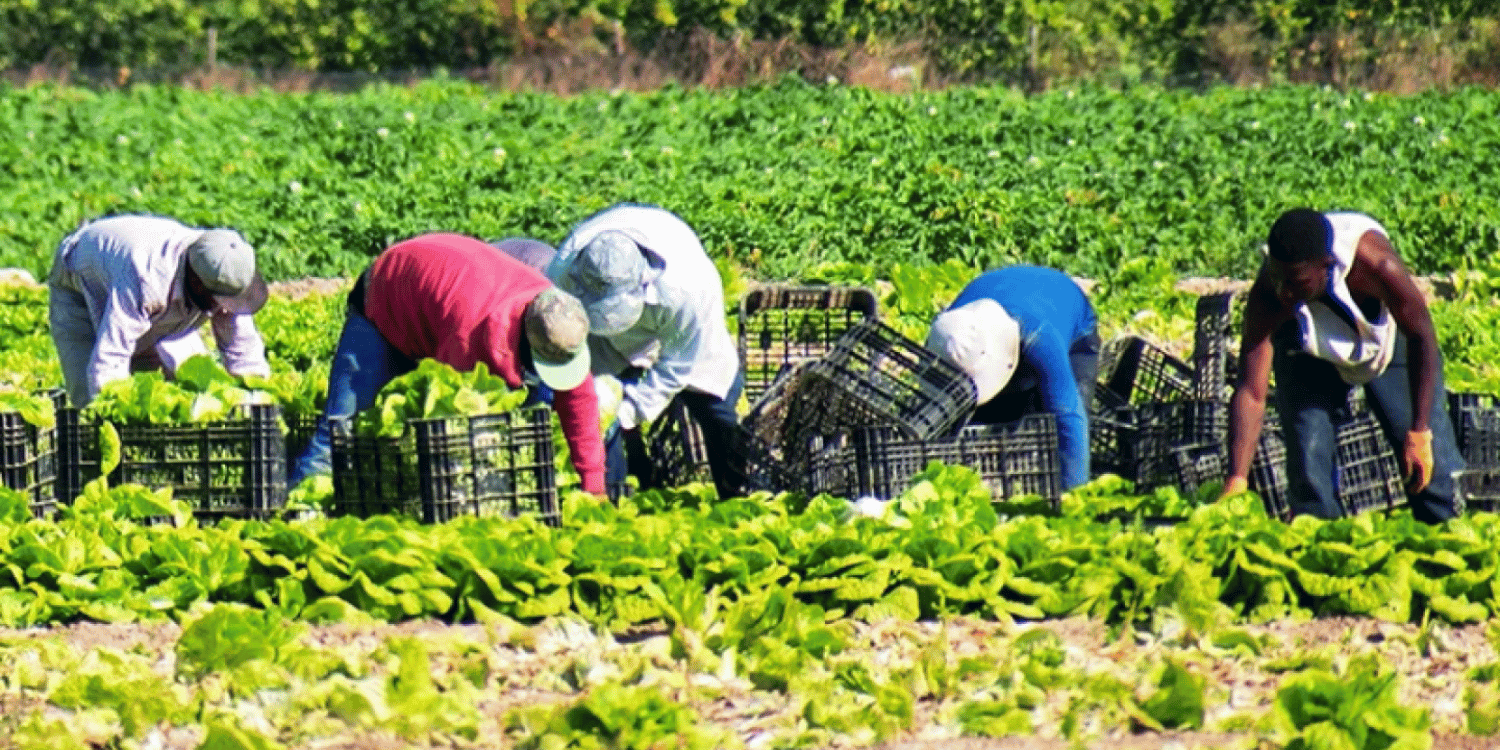Decisions around the application of artificial intelligence (AI) in various sectors raise a slew of ethical conundrums.
In the agricultural spectrum, the entanglement of AI adds a deeply complex layer to the existing challenges of this industry.
This complexity stems not just from the operational changes AI introduces, but equally from the moral implications of its use.
We are duty-bound to analyze these matters on multiple fronts, from data privacy and consent, to social justice and beyond.
As gatekeepers, it’s incumbent upon us to understand and communicate these complexities effectively.
We must strive for a future where AI is utilized in agriculture with conscious respect for the ethical considerations involved.
- Potential for job displacement due to automation in agriculture.
- Addressing data privacy concerns and protection of farmers’ rights.
- Understanding AI’s impact on agricultural ecological systems.
- Ensuring equitable distribution of AI-driven benefits in agriculture.
- Avoiding risk of increased agribusiness monopoly due to AI use.
To add depth to our understanding, we’ll be addressing other significant areas related to AI use in agriculture in the upcoming sections.
These include investigating the governance issues with AI, exploring how AI-led transformation could reshape the rural labor market, and discussing the potential societal implications.
With a focus on exploring all angles, this article aims to foster informed discussions and decisions about AI adoption within the agricultural sector.
Building on the key highlights, we’ll present a balanced perspective on these compelling issues, making every effort to ensure that our considerations remain grounded and relatable.
Contents
Ethical Considerations In Ai Use In Agriculture
1. Potential Job Displacement Due to Automation
In Short: Automation in agriculture promises increased efficiency but risks significant job displacement. Reskilling agricultural workers and creating more advanced roles may mitigate some job losses, while raising ethical questions about the human cost of technological advancement.
Automation within the agricultural sector holds immense potential for higher efficiency and productivity.
However, it simultaneously carries the potential threat of job displacement as industries swap human labor for automated solutions.
This aspect of technological advancement poses a significant ethical question: is it right to optimize resources at the cost of people’s livelihoods?
The answer isn’t straightforward, but we can investigate the possibilities, starting with understanding the extent of this potential job loss.
Studies indicate that a high percentage of farming tasks are likely to be automated in the future.
These tasks range from crop picking to livestock monitoring, and even agricultural administration.
As advanced technologies rank highly in consistency, accuracy, and tirelessness, it’s reasonable to surmise the potential for significant job displacement.
The following list provides a comprehensive outline of the roles that are most threatened by AI adoption in agriculture:
- Pickers, planters, and pruners: These roles are highly susceptible to automation due to advancements in machine vision and robotic arms.
- Agricultural equipment operators: As automation technologies advance, the need for human operators diminishes.
- Livestock farmworkers and managers: Automated systems for feeding, health tracking, and environmental control reduce the need for human intervention.
- Agricultural inspectors: Drone technology and advanced sensors can perform many inspection tasks.
Despite this potential displacement, it’s essential to consider that new technologies also create new job opportunities.
More advanced roles such as AI specialists, roboticists, and drone experts might become increasingly important in a more automated agricultural sector.
Another possibility that could soften the impact of job loss is the idea of reskilling.
Agricultural workers who lose their jobs to automation could be trained in new, relevant roles.
Thus, while there’s a genuine concern for job displacement due to automation, there are also potential avenues to attenuate this impact.
Pro Tip: As we embrace automation in agriculture, it’s important to also consider reskilling displaced workers for new roles such as AI specialists, roboticists, and drone experts to minimize job loss.
Nonetheless, the ethical question stands: What degree of displacement, if any, is an acceptable sacrifice for the larger benefits these technologies promise?
In balancing the benefits of automation with the potential for job loss, all stakeholders must come to the table, keeping in mind not just the economic, but human impact of their decisions.
2. Data privacy and farmers’ rights
In Short: The advancement of AI in agriculture challenges data privacy and farmers’ rights, provoking a need for ethical guidelines and a fair framework respecting farmers’ data control. Advocacy efforts focus on pushing for stringent data protection laws, informed consent from farmers, transparent data practices and data anonymization to maintain privacy while tapping into technological benefits.
When discussing artificial intelligence in agriculture, it’s critical to address the crossroads of data privacy and farmers’ rights.
The rapid advancement of AI technology and data collection practices present a variety of challenges.
This is especially true in the agricultural field where farmers’ personal and operational information is frequently required for the deployment of these technologies.

As such, there is a rising demand for the establishment of ethical guidelines to safeguard these important data points.
In relation to this, it’s important to note that numerous organizations and working groups are looking into this matter.
Their primary aim is to establish a fair and equitable framework, centered on respecting farmers’ privacy and data control rights.
Complications often arise when dealing with third-party organizations such as agtech corporations, insurers, and other financial institutions.
These groups have a vested interest in acquiring farmers’ data, primarily for product development and risk assessment purposes.
It’s therefore imperative to ensure that these corporations, in their quest for innovation, don’t infringe on farmers’ rights to data privacy and control.
A growing number of advocacy groups and activists focus their efforts on curbing these potential infringements.
They do so by lobbying for more stringent data protection laws and promoting fair data sharing principles in the industry.
Below is a list of key points to consider when addressing data privacy and farmers’ rights:
- Clear and informed consent from farmers before using their data. This would prevent any exploitation and ensure that each party understands their responsibilities.
- Access control: Farmers should have the authority to control who has access to their data and for what purpose this data can be used.
- Transparent data practices: Any business entities collecting and using farmers’ data should provide transparency about its data practices, including how data is stored, safeguarded and utilized.
- Data anonymization: It’s paramount that any data used for research or commercial purposes is anonymized to avoid exposing farmers’ personal or business information.
While it’s important to prioritize the advancement of technology, it should never be at the expense of an individual’s privacy and rights.
Agriculture is a sector heavily rooted in tradition and always vigilant of external influence and control; thus, it’s critical that AI in agriculture evolves responsibly and considers the welfare of its most important stakeholders – the farmers.
The struggle between technological advancement and privacy rights has been long-standing.
Important: The rapid advancement of AI technology in agriculture presents challenges in data privacy and farmers’ rights, making it crucial to establish ethical guidelines to protect these vital data points and ensure farmers have the authority to control who has access to their data.
Yet, it’s ever more highlighted in the era of AI in agriculture.
Continued discussions and systematic efforts are necessary to ensure that data privacy and farmers’ rights are adequately protected as we embrace the benefits brought about by artificial intelligence in agriculture.
3. AI’s Impact on Ecological Systems
In Short: AI-driven agricultural practices, including large-scale farming, threaten biodiversity, the balance of ecosystems, and cause an increase in energy consumption. Therefore, it’s necessary to ensure the responsible use of AI in agriculture, with a focus on preserving our ecosystems for future generations.
The application of Artificial Intelligence (AI) in agriculture creates a ripple effect in our environment and, as such, the pivotal role it plays in shaping our ecological landscape cannot be downplayed.
AI in agriculture heralds a revolutionary age of efficiency and precision. However, our ecological systems bear the weight of any ensuing fallout.
One significant concern lies in the modification of natural habitats due to AI-driven agricultural practices such as large-scale farming.
Increased use of drones and automated machines for monitoring and cultivation potentially leads to significant changes in landscapes resulting in fragmentation and consequent wildlife displacement.
This indirectly affects biodiversity, unsettling ecosystem balance and stability.
Moreover, the matter of energy consumption cannot be neglected. Currently, AI systems require a substantial amount of power for operation, contributing substantially to global warming.
On a precautionary note, there is a need to account for these impacts in the development and deployment of AI technologies in agribusiness.
The list below presents a snapshot of the ecological implications when considering the deployment of AI in the agricultural sector:
- Alteration of natural habitats and landscapes
- Energy consumption and contribution towards climate change
- Erosion of biodiversity with potential loss of species
- Potential contamination with consequent impacts on soil and water resources due to the increased use of fertilisers and pesticides.
The considerations suggest adopting a keen balancing act, ensuring the gains from AI integration in agribusiness do not compromise ecological sustainability.
It is paramount to conduct rigorous environment impact assessments with every AI technology implementation in agriculture.
The ecological footprint of AI in agriculture, thus, is an area in urgent need of attention, as the trade-off between technological advancement and ecological health is not one we can afford to overlook.
Emphasising on ensuring the harmonious interaction between AI applications in agriculture and natural ecosystems becomes a moral imperative.
Moving forward, continuous evaluation and regulation of AI systems in agriculture play a crucial role in preserving the delicate equilibrium of our ecological systems.
Pro Tip: When implementing AI in agriculture, conduct rigorous environmental impact assessments to ensure the technologies do not compromise ecological sustainability.
In a bid to ensure the ethically responsible use of AI in agriculture, the conversation must transcend efficiency to consider preserving our ecosystems for future generations.
Thus, whilst AI can offer important solutions to streamline and enhance agricultural practices, a careful and considered approach prioritising not only human needs but also ecological health is important.
4. Fair Distribution of AI-Driven Benefits
In Short: While AI has significantly benefited agriculture, there’s a risk that such benefits are disproportionately concentrated among large farming operations. Therefore, it’s imperative to ensure equitable distribution through measures like subsidizing AI technology for small-scale farmers, capacity-building programs, inclusive platforms, and promoting local tech development.
The rise of Artificial Intelligence (AI) in agriculture has undeniably brought significant improvements and benefits.
However, there’s a growing concern on whether these benefits are equitably distributed among all stakeholders involved.
Given the high costs associated with implementing AI technologies, there’s a risk of AI-driven benefits being disproportionately concentrated among large, well-funded farming operations, leaving small-scale farmers and their communities behind.

It is, therefore, imperative to pay attention and take steps to ensure the fair distribution of these benefits.
This can be advanced by limiting barriers to entry and creating opportunities for all farmers, regardless of their size or financial capacity, to access and benefit from AI technologies.
There are several ways of promoting equitable distribution of AI benefits in agriculture. Here are a few key strategies:
- Subsidizing AI technology for small-scale farmers. National and regional governments, philanthropic organizations, and development banks should consider providing subsidies and grants that would allow smaller farmers access to crucial AI technologies.
- Developing capacity-building programs. Alongside providing financial assistance, there needs to be programs that help farmers understand and efficiently use AI technology.
- Establishing inclusive platforms. There should be platforms that welcome farmers of all scales to share their experiences, learn from others, and collaborate in the continuous improvement of AI implementation in agriculture.
- Promoting local tech development. Encouraging local companies to develop AI solutions specifically tailored for the needs and conditions of local farmers can also help mitigate the risk of widening disparities.
This equitable distribution of AI benefits in agriculture is not only an ethical imperative but also strategically profound.
When all the farmers, regardless of their scale, have access to cutting-edge technology and the capacity to leverage them, the entire agricultural sector, and by extension the broader economy, stands to benefit.
Markets can grow, productivity can increase, and livelihoods can be made secure and sustainable.
Moreover, the success of AI in agriculture largely depends on its acceptance by farmers, and this acceptance is more likely if farmers perceive that AI technologies are fairly distributed and beneficial to all regardless of their scale.
Important: Given the high costs associated with implementing AI technologies, there’s a formidable risk of AI-driven benefits being disproportionately concentrated among large, well-funded farming operations, unfairly leaving small-scale farmers and their communities behind.
To conclude, while we embrace the promise of AI in revolutionizing agriculture, we need to pay close attention to fairness in the distribution of AI-driven benefits.
It requires a proactive, concerted effort from all stakeholders, including governments, tech companies, farmers, and civil society organizations, to ensure that AI works for every farmer and contributes to the overall sustainability of the farming sector.
5. Risk of Increased Agribusiness Monopoly
In Short: The application of AI in agriculture holds the risk of escalating agribusiness monopolies, with major companies potentially gaining significant market power, controlling prices, stifling innovation and neglecting smaller farms. This not only raises economic concerns, but also poses questions of sustainability and socio-economic equality, highlighting the need for effective policies to maintain fairness and competition within the field.
As we dig in further into the exploration of Artificial Intelligence (AI) in agriculture, it is crucial not to turn a blind eye towards the potential risks and evolving challenges it brings with it.
Amongst several concerns, one significant apprehension is the increased risk of agribusiness monopoly.
The benefit of using AI in agriculture is undeniable, making processes more efficient, enhancing productivity and ultimately reducing the cost of operations.
However, this also leads to an increasing dependence on a few AI technology providers and can catapult companies into positions of significant market power.
The biggest players in the AI technology game might gain an unhealthy influence over the entire agricultural landscape potentially becoming the ‘gatekeepers’ of the industry.
Simultaneously, farmers and small-scale agriculturists risk being marginalized, leading to a drastic skew in the agricultural power structure.
Now, let’s take a look at a few issues that arise due to potential agribusiness monopoly:
- One major concern is that of price control. Dominant companies can control the prices of important AI services and products, which might be detrimental to small farms.
- Additionally, monopolies may impede innovation as competition is stifled.
- The potential for reduced variety of products and services is also a pressure point for the industry.
- Furthermore, the monopoly could lead to neglected rural areas, with focus turning towards bigger and more profitable farms.
As the aforementioned points suggest, the impact of a potential monopoly extends far beyond the economic realm.
The social implications of technology-driven agricultural sector pose pressing questions about sustainability and socio-economic equality.
As we endeavor to attain Universal Food Security objectives, it becomes crucial that the advent of AI in Agriculture does not deepen existing chasms between the ‘Haves’ and ‘Have-Nots’.
Pro Tip: Ensure to develop effective policies and strategies to regulate agribusiness monopoly in the advent of AI in agriculture, keeping the field competitive for all players and preventing undue advantages to select entities.
It’s crucial to develop effective policies and strategies to regulate the agribusiness monopoly and keep the field fair and competitive for all players, big or small.
The goal should be optimizing benefits from AI technology, rather than allowing undue advantages to certain entities.
The Bottom Line
While Artificial Intelligence has the potential to revolutionize agriculture by improving productivity, optimizing resources and minimizing environmental impact, its application must be moderated and guided by sound ethical principles. It is essential to protect the interests of small-scale farmers, ensure that access to these technologies isn’t confined to only large-scale agribusinesses, and advocate for the democratic participation in how AI is deployed in farming. The importance of transparency can’t be underscored enough as it allows users of AI to understand the basis of decisions, thus leading to broader acceptance and ease in establishing relevant regulations. AI development in agriculture should be guided by the goal of augmenting, rather than replacing, human efforts, keeping at all times the wellbeing of all stakeholders in mind.
At the end of the day, the leveraging of AI in agriculture presents a unique opportunity to make a positive difference in the world, despite the daunting ethical concerns that accompany its implementation. Through continued discussion, conscientious application of AI and learning from trial and error, we can navigate these ethical concerns and ensure that technology serves the best interests of all stakeholders in agriculture.




















